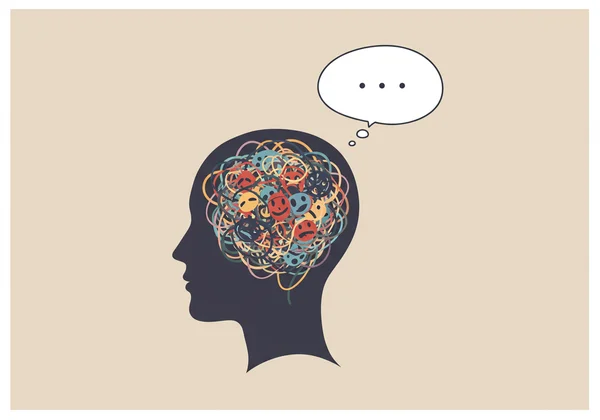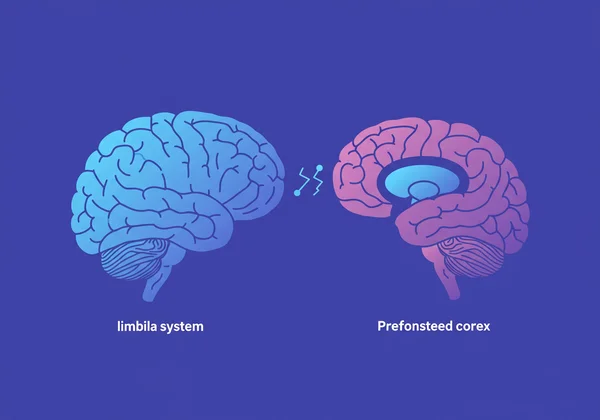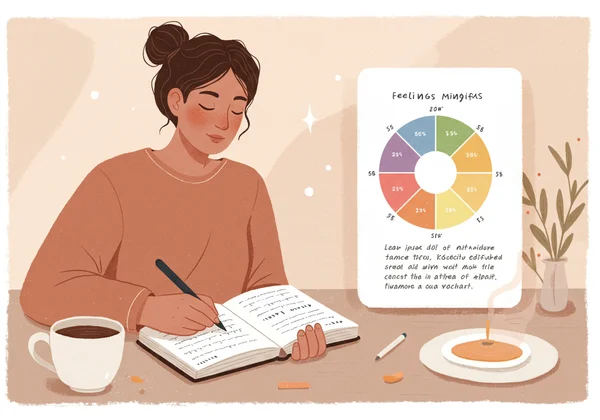Online Alexithymia Test for Adults: Symptoms, Causes, and Management
Introduction: Understanding Alexithymia and the Online Alexithymia Test
It can be deeply challenging to navigate a world that expects you to effortlessly name and share your feelings, especially if you find yourself struggling to even identify them. If this resonates, you're not alone in exploring alexithymia – a trait that offers a unique lens through which to understand your emotional landscape. This guide aims to demystify alexithymia, offering insights into its signs, origins, and practical ways to foster a richer emotional connection with yourself and others. For those wondering where to begin, a well-designed online alexithymia test can offer valuable initial insights.
Understanding Alexithymia: What Is It Truly?
Alexithymia is not a mental health disorder in the formal diagnostic sense, but rather a subclinical trait that describes a specific way of processing emotions. People with high alexithymia traits are not unfeeling or cold; they simply have a different cognitive style when it comes to their inner world. Their emotional signals may be present, but the ability to translate those signals into conscious understanding and language is limited. This creates a gap between feeling an emotion physically and knowing what that emotion is.

Beyond Emotional Unavailability: Defining Alexithymia
While often confused with emotional unavailability, alexithymia is distinct. Emotional unavailability is frequently a conscious or subconscious choice to avoid emotional intimacy. In contrast, alexithymia is a core difficulty in the cognitive processing of emotions. A person with alexithymia might genuinely want to connect emotionally but lacks the internal framework to do so effectively. They struggle to find the words, not necessarily the will.
Primary vs. Secondary: Different Types of Alexithymia
Understanding the origins of these traits can be helpful. Alexithymia is generally categorized into two types:
- Primary Alexithymia: This is considered a stable, enduring personality trait that may have neurobiological or genetic underpinnings. It is present from early in life and is not directly caused by an external event.
- Secondary Alexithymia: This type develops in response to significant psychological stress or trauma. It can be a coping mechanism where the mind disconnects from overwhelming emotions to protect itself. This form can sometimes lessen if the underlying trauma is addressed.
Common Misconceptions and What Alexithymia Is Not
It's crucial to clear up common misunderstandings. Alexithymia is not a lack of empathy, although it can sometimes appear that way because individuals struggle to express their own feelings and, by extension, recognize them in others. It is also not the same as psychopathy or sociopathy, which involve a disregard for the rights and feelings of others. People with alexithymia can still be caring, moral, and form deep bonds; they just navigate the emotional aspects of those bonds differently.
Recognizing the Signs: What Are Alexithymia Symptoms?
The signs of alexithymia can manifest in various ways, impacting how a person experiences life, interacts with others, and understands themselves. Identifying these patterns is the first step toward greater self-awareness. A confidential alexithymia test is a practical tool for exploring these traits. To better understand your personal patterns, you can always take our free test.
Alexithymia Symptoms: Difficulty Identifying and Expressing Feelings
This is the hallmark symptom. A person might feel a strong internal sensation—like a knot in their stomach or a racing heart—but be unable to label it as "anxiety," "excitement," or "anger." When asked how they feel, they might respond with "I don't know" or describe physical sensations instead of emotional states.
Trouble Distinguishing Bodily Sensations from Emotions
There is a close link between our bodies and our feelings. For someone with alexithymia, this connection can be confusing. They may misinterpret the physical signs of anxiety as a medical issue or mistake the physical ache of sadness for simple fatigue. This difficulty in connecting physical arousal with a specific emotion is a core challenge.

A Predominantly Logical, Outward-Oriented Thinking Style
Individuals with high alexithymia traits often have an externally-oriented thinking style. They tend to focus on the concrete, logical, and practical aspects of situations rather than their internal emotional responses. They may be excellent problem-solvers but find conversations about feelings to be unproductive or confusing.
Challenges in Social and Interpersonal Communication
Because relationships are built on emotional exchange, alexithymia can create friction. Partners or friends may feel that the person is distant, uncaring, or unsupportive because they don't provide expected emotional responses. The individual with alexithymia may struggle to "read the room" or understand the emotional nuances of social interactions, leading to misunderstandings.
The Roots of Alexithymia: What Causes It?
The origins of alexithymia are multifaceted, with research pointing to a combination of neurological, genetic, and environmental factors. There is no single cause, but rather a constellation of influences that can contribute to its development.
Exploring Neurological and Brain Differences
Studies have suggested that alexithymia may be linked to differences in how certain brain regions communicate. Specifically, there may be reduced connectivity between the limbic system (the brain's emotional center) and the prefrontal cortex (responsible for thinking and language). This could disrupt the process of translating raw emotional signals into conscious thoughts and words.

Genetic and Inherited Factors: Is It in Your DNA?
There is evidence to suggest a genetic component to alexithymia. The trait appears to run in families, indicating that some people may have a predisposition to this emotional processing style. However, genetics are only part of the story, and environmental factors play a crucial role in how these predispositions are expressed.
Environmental and Developmental Influences (e.g., Trauma, Early Experiences)
Early life experiences are profoundly important in shaping our emotional development. Childhood trauma, neglect, or an environment where emotions were not openly discussed or validated can lead to secondary alexithymia. In such cases, suppressing or disconnecting from emotions becomes a learned survival strategy that can persist into adulthood.
Alexithymia and Neurodivergence: Autism, ADHD, Trauma, Depression, and Anxiety
Alexithymia is often found alongside other conditions, acting as a related but distinct feature that can complicate diagnosis and treatment. Recognizing this overlap is key to a holistic understanding.
The Overlap with Neurodivergence (Autism Spectrum Disorder, ADHD)
There is a significant overlap between alexithymia and neurodivergent conditions. A large percentage of individuals on the autism spectrum also exhibit high traits of alexithymia. It's important to distinguish between the two; social difficulties in autism might stem from challenges in understanding social cues, while in alexithymia, they are more directly related to processing personal emotions. To explore your patterns, an initial self-assessment can be a helpful tool.
Connecting Alexithymia with Trauma, Depression, and Anxiety
Alexithymia is strongly linked to PTSD, depression, and anxiety disorders. For individuals with trauma, alexithymia can serve as a defense mechanism against overwhelming emotional pain. In depression, the emotional numbness experienced can be a form of alexithymia. Difficulty identifying and managing emotions can also exacerbate anxiety, as unnamed feelings build without an outlet.
Managing Alexithymia: Strategies for Better Emotional Insight
While alexithymia can be a deeply ingrained trait, it is not an unchangeable sentence. Understanding the results from an alexithymia test can provide a personalized starting point for this journey. You can take an initial assessment to discover your results. With conscious effort and the right strategies, individuals can develop greater emotional awareness and improve their ability to connect with themselves and others.
Therapeutic Approaches: CBT, Psychodynamic Therapy, and More
Several therapeutic modalities can be effective. Skills-based therapies like Cognitive Behavioral Therapy (CBT) can help individuals learn to connect their thoughts, feelings, and physical sensations. Psychodynamic therapy can explore how past experiences may have contributed to emotional difficulties. Group therapy can also be beneficial, providing a safe space to practice identifying and expressing feelings with others.
Self-Help Techniques: Emotion Journaling & Mindfulness Practices
Practical, daily exercises can build emotional muscles over time.
-
Emotion Journaling: Instead of writing about events, focus on identifying any feelings or physical sensations experienced throughout the day. Using a "feelings wheel" can provide a vocabulary to choose from.
-
Mindfulness and Body Scans: These practices encourage paying close attention to bodily sensations in a non-judgmental way. This can help strengthen the connection between physical feelings and their emotional source.

Enhancing Communication in Personal and Professional Relationships
Improving communication requires being open with trusted individuals. Explaining alexithymia to a partner or friend can help them understand that a lack of emotional expression isn't a lack of care. Using "I statements" that focus on thoughts and physical sensations (e.g., "When that happened, I noticed my stomach tightened") can be an effective way to communicate without needing a precise emotion label.
When and How to Seek Professional Support
If alexithymia traits are causing significant distress in your life or relationships, seeking support from a mental health professional is a proactive and courageous step. A therapist can provide a formal assessment, offer tailored strategies, and guide you through the process of emotional discovery.
Your Path to Emotional Growth: Taking the Next Step
Alexithymia is a recognizable and understandable trait, not a personal failing. Understanding that your brain may simply process emotions differently is an empowering realization. It shifts the focus from "what's wrong with me?" to "how can I work with this?" With targeted strategies and a commitment to self-exploration, you can develop a richer emotional vocabulary and build more fulfilling connections. Life becomes richer when exploration is made easier.
Ready to explore your own emotional patterns? Understanding is the first step on any journey of growth. Our unique Alexithymia Test online can provide personalized insights and a starting point for your journey. Choose between an instant summary score or unlock a comprehensive AI personalized report with actionable advice tailored just for you.

Frequently Asked Questions About Alexithymia
How do you tell if you have alexithymia?
The primary signs include persistent difficulty identifying your feelings, trouble describing them to others, a focus on external events over internal states, and limited imaginative processes. While not a formal diagnosis, if these signs resonate deeply, taking a self-assessment tool like the OAQG2 test can offer valuable clarity and serve as a good starting point for further reflection or discussion with a professional.
What is the root cause of alexithymia?
There isn't one single root cause. It's believed to be a complex interplay of genetic predispositions, neurological differences in how the brain processes emotion, and environmental factors such as early childhood trauma or a family environment where emotional expression was discouraged.
Can a person with alexithymia cry or feel love?
Yes, absolutely. A person with alexithymia experiences emotions, including love, sadness, and anger. The difficulty lies not in the feeling itself, but in the conscious recognition, labeling, and expression of that feeling. They might cry without fully understanding the specific emotion driving the tears, or feel a deep attachment and loyalty to someone, which is their expression of love, even if they can't articulate it in romantic or poetic terms.
How do you fix alexithymia? Is there a cure?
Since alexithymia is a personality trait rather than an illness, the goal isn't to "fix" or "cure" it. Instead, the focus is on management and skill-building. Through therapy, mindfulness, journaling, and communication practices, a person can significantly improve their emotional awareness, enhance their ability to connect with others, and learn to manage the challenges associated with the trait, leading to a much richer life. Start your journey today to learn more.